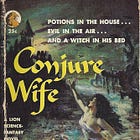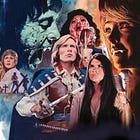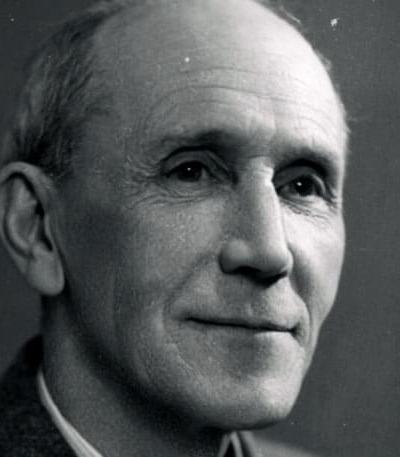Scary Season Starts Earlier Every Year: Family Friendly Week 3 Recommendations
None of my content is behind a paywall, but if you want to support me please consider being a paid subscriber or heading over to Buy Me a Coffee to Buy Me a Book.
Not All Things That Frighten Are Gross
We have gone through three weeks of the Spooky Season and I am late in providing my third list of movies, but I have been hard at work on my dissertation and I want to make sure that each of these lists is well thought out and provides a good jumping off point for discussions. My first list contained a number of my favorite films that I watch as a part of my annual Halloween marathon and my second list included a number of films that I think are either overlooked (Captain Kronos) or that I encountered recently (The Devils). This week’s list is a little different.
Late last week one of my students walked up to me after class and said, “I was reading your lists of Scary Season movies and I noticed you didn’t include Coraline.” I thought about it for a moment and realized that not only had I not included Coraline, I had not even thought of doing a list of “family friendly” horror films and there are quite a few excellent ones. Some of them are Christmas movies, like Gremlins and Ghostbusters, but there are still a good number of family friendly Scary movies that are perfectly family friendly.
Just as I was finalizing my list, I got an email notifying me that Rebekah King had released her latest “Bat Book” Tea and a Tale podcast episode and I absolutely had to listen. Her choice of tale for this week is J.D. Beresford’s short story “Powers of the Air,” which was originally published in the October 1917 issue of the short lived Seven Arts Literary Journal. It was intended to be a spark for a literary buttress against a new spirally burnt-out epoch that might echo the one that followed the Civil War. In the May 1917 issue, editor James Oppenheim lamented the post-bellum period as an era that, “glorified Captain of Industry and the rise of Christian Science. It contain[ed] not one name of preeminence in art or letters, in statesmanship or leadership. Evidently war wearies everyone except the practical man.”
James Oppenheim and Waldo Frank came up with the idea for the journal at a party in Greenwich Village and eventually published monthly issues from November 1916 to October 1917. The journal did not last long, but it is an artifact critical of the first World War that contains a number of literarily important contributors. Among them were Theodore Dreiser, D.H. Lawrence, Robert Frost, Amy Lowell, Kahlil Gibran, and, of course, J.D. Beresford. That’s a pretty good list of contributors for a short lived magazine. Much like the small fantasy and “scientification” fanzine The Fantasy Fan that was published from 1933 to 1935, Seven Arts had impact beyond what its short publication length might suggest.
The name of the journal is likely a play on the Seven Liberal Arts and the Seven Traditional Fine Arts. According to the first issue, The journal would publish stories, short plays, essays, and brief editorials. In doing so, it could use one of the Fine arts (and three of the Liberal arts) to comment and promote the remaining ones. To quote the editors, “The Seven Arts is not a magazine for artist, but an expression of artists for the community.”
Beresford’s story, “Powers of the Air,” is a reference to Ephesians 2:2 where those powers are associated with evil and the adversary. Like the phrase "God of this World” from 2 Corinthians 4:4 is reference to the Devil. These are phrases with which a child of a minister, which Beresford was, would be intimately familiar and Beresford uses the term to good effect in a story about the nature of belief and evil. The ending is wonderfully ambiguous, perfect for the son of a minister who went from atheism to theosophy, and lends itself to multiple interpretations and discussions.
I include it in this recommended viewing list because Dr. King’s reading begins so wonderfully warm and inviting, as inviting as the tea she brews at the beginning of the episode. She reads in tones that welcome the listener and are familiar to all of us who went to wonderful story time readings as children. As the story progresses though, Dr. King’s tone becomes more foreboding and our anxiety increases with that of our protagonist. By the end, we have experienced the same terror as the narrator but perhaps lack his hope. It’s a delightful tale, masterfully read. I include the text of the story, from The Seven Arts, for you to follow as you engage with Dr. King’s presentation.
Like many of the movies to follow, it’s a tale appropriate for children that has thought provoking content within it.
Coraline
I have a love/hate relationship with the fiction of Neil Gaiman. No not for that reason that’s an entirely different discussion that I will take up at another time. I enjoy his fiction and love the way he incorporates past masters into his tales and wears his influences on his sleeves. I hate the way his fans seem oblivious to those influences and portray him as a uniquely imaginative figure. His gift is not ποίησις (poiesis), but synthesis. His story Stardust wonderfully combines Dunsany’s King of Elfland’s Daughter with elements of Peter Pan and the novel Coraline is a masterful fusion of Roald Dahl and Norton Juster (among others) and Lewis Carroll. To return to my enjoyment of Gaiman’s fiction, as I wrote he wears his influences on his sleeve. He will be the first to recommend the fiction that inspired him, even as many of his fans will ignore that they exist.
The movie was directed by Henry Selick who directed The Nightmare Before Christmas and James and the Giant Peach, each of which evoked different visual influences. Coraline is a perfect combination of those two aesthetics and tells the tale of a young girl who discovers a portal to an “Other World” that contains things she believes she desires but at a cost she may or may not be willing to pay. It draws heavily on classic faery tales and well…so much more. Watch it and see just how creepy a child appropriate story can be.
The Addams Family (1991)
To be honest, you could include any one of the Addams Family films here, animated or live action, because the films are a lovely tribute to the importance of family and love of our fellow man. The Addams Family is an odd lot of characters who look and behave differently from everyone else, in what many might think are terrifying differences, but they love one another whole heartedly and unreservedly. This particular story is based on the relationship between Gomez Addams and his brother Fester who had a falling out 25 years prior to the film. Some con artists decide to take advantage of this rift to have an impostor pose as the brother so they can steal the Addams Family’s wealth. It’s a lovely noir or horror set up, but the film has a delightful ending.
Director Barry Sonnenfeld has a mixed filmography that includes the very entertaining Men in Black and Get Shorty, a personal guilty pleasure (For Love or Money), and one major whiff with Wild Wild West, but his Addams Family entries hit all the right notes and this one in particular. I’m a big fan of Raul Julia and he is fantastic as Gomez. Anjelica Huston, who will feature in another film this week too, is perfect as Morticia, but Christina Ricci and Christopher Lloyd really steal the show as Wednesday and Fester. The relationship between Fester and Wednesday and Pugsley is central to the resolution and a heartwarming commentary on family and love.
I Married a Witch
René Clair’s I Married a Witch is often described as one of the inspirations for the television show Bewitched. Before I move on, can we just talk about how weird it is to look at the Harpie’s Bizarre website in 2011? I mean, it’s like looking into another world. It’s interesting that this is one of the sources used to back claims of Bewitched being a partial inspiration because it sites E! True Hollywood Story: Bewitched as the actual primary reference. Good luck finding that video though. Besides, Vanity Fair claims it was an inspiration without any citations so we can totally trust that reference, right?
While I can see some similarities and points for inspiration, I’ve always believed that Bell, Book, and Candle was a much bigger inspiration, and yes the Harpie’s Bizarre site claims that it too was a reference. Since I’ll be recommending both films, Bell, Book, and Candle later, I’ll let you decide which was a greater influence.
René Clair is probably the most underrated popular French director in cineaste circles. His romantic fantasy It Happened Tomorrow and adaptation of Agatha Christie’s And Then There Were None are two of my favorite films and I Married a Witch is a very good example of a true Screwball Comedy. The Screwball Comedy is a combination of farce and Romantic Comedy where a series of errors lead a couple to fall in love. Many of what Stanley Cavell, and I, think of more as Remarriage Films often get categorized as Screwball Comedies, but this one is a true Screwball, though not an over the top one.
In this case, a witch named Jennifer and her father Daniel are burned at the stake by Puritan minister Jonathan Wooley. With her dying breath Jennifer curses the future generations of Wooley men to have unhappy marriages until one of them marries a witch. To prevent their spirits from rising, Jonathan Wooley has buried Jennifer and Daniel under an oak tree which traps their souls. It’s kind of ironic that Wooley uses a pagan trap, but that’s a tangent.
Needless to say, we fast forward to the modern day (1941) and lightning strikes the tree and frees the souls of the witch and her warlock father. Newly freed, they seek to get further revenge on the Wooley clan only for a series of humorous events to unfold. Frederic March is wonderfully wooden as the straight in the film and Cecil Kellaway makes a good clown in his scenes. Veronica Lake is charming and expressive as a droll, though not clownish, foil for March. Susan Hayward has a limited part as the third member of the core “love triangle,” a love triangle where only two are actually in love, and it’s interesting to see just how charismatic she is. She has very few lines, but when she’s on screen you can see why she became a huge star and why she was later selected to play Bathsheba opposite Gregory Peck.
Just watch it already. It’s delightful.
The Hound of the Baskervilles
Did you really think a week would go by without a Hammer Studios recommendation? Let me put this out there right now. Every week will include at least one Hammer Studios film. When I think of Classic Horror films, Hammer and Amicus are the first two studios that come to my mind. Sure, Universal introduced us to many of the classic monsters, but the Hammer versions were the ones my dad and Opa showed me when we watched movies on the weekend. They are my personal Dark Universe.
In this case, hobby miniature wargamer and iconic actor, Peter Cushing plays the role of Sherlock Holmes opposite Christopher Lee who plays Sir Henry Baskerville. André Morell us a wonderful Dr. Watson who ends up doing a surprising amount of footwork in this mystery as he is the person sent out into Dartmoor to find evidence of a potentially mystical Hell Hound that haunts the Baskerville family. As with “Powers of the Air,” this is a tale that deals with skepticism and the supernatural, but the answer of whether there is any zauberkraft going on or not is much clearer in this piece. Terence Fisher’s direction is, as it tends to be in a Hammer Film prior to the camp era, quite good and the film paces the tension and reveals in an engaging manner.
Wallace & Gromit: The Curse of the Were-Rabbit
What would you get if the beloved characters of Aardman Animations beloved Wallace & Gromit franchise were transported into a Hammer Film? That’s the question that Wallace & Gromit: The Curse of the Were-Rabbit asks and answers. That answer is that you would get an Academy Award winning film that is tremendously entertaining. The stop motion clay animation in this production is top notch and the combination of elements from The Wolf Man and Night of the Lepus mark this first of vegetarian horror films as an all time classic.
The Witches
Witches are an iconic part of the Halloween season for obvious reasons. Hint: it’s the connection with pagan fall rituals and the terrors of the witch trials of the late Renaissance/early Enlightenment period. They provide the perfect combination of beauty, danger, and the hidden rot of deep and shadowy forests. A great cinematic witch is like the Schwarzwald. It is beautiful or approachable on the outside, but there are risks aplenty if you decide to venture into contact with them.
Roald Dahl’s The Witches tells us the tale of Luke Eveshim whose wellness vacation to Bournemouth happens to occur at the same time and place as a convention of witches that is masquerading as the Royal Society for the Prevention of Cruelty to Children (RSPCC). I won’t go into how Ian Fleming and Roald Dahl and their Baker Street Irregulars were used by the British Government to encourage the United States to join the fight against the Nazis because The Witches was written long after that, but I will say that his use of a friendly non-profit as cover for something more sinister could be interpreted as a call to be wary of those who give themselves virtuous names as they might be hiding evil underneath. Such names allow evil to hide in plain sight.
The movie is an entry in what I like to call “Mouse Fantasy.” It’s a genre that includes books like Prince Caspian and The Voyage of the Dawn Treader, The Rescuers, Stuart Little, Redwall, and Mrs. Frisby and the Rats of NIMH, movies like The Rescuers, The Secret of NIMH, and The Great Mouse Detective, as well as games like Mouseguard, Mausritter and Mice and Mystics. In this case, it isn’t an anthropomorphic mouse but rather a musmorphic human.
The House with a Clock in Its Walls
Eli Roth is typically known for pushing the boundaries of what is acceptable in horror films. His past productions like the Hostel series led film critic David Edelstein to brand Roth’s brand of horror “torture porn.” I did a discussion with LYT about Edelstein’s claim back in the before times in the not now that I will re-edit and upload soon. What critics like Edelstein missed in their early critiques of Roth is that he is a director who loves horror in all of its forms and his aesthetics aren’t limited to grossing us out or making us feel visually uncomfortable.
He exhibits his talent for pacing and suspense in The House with a Clock in Its Walls and the end result is an entertaining fantasy about a young boy who discovers that his Uncle is a warlock with a witch best friend, but in this case the sorcerous characters closest to the protagonist are allies and not enemies. Underlying the story is a mysterious clock of unknown purpose, a purpose tied to a desire to eliminate the horrors of the past but that will guarantee a worse outcome twisted by a great evil.
The screenplay by Eric Kripke, who also wrote the underappreciated Boogeyman (2005) and is creator of both the Supernatural and Timeless television franchises, is very fun and so too is the acting by Jack Black and Kate Blanchett. By the time the film was released in 2018, we were already deep into the Jack Black is in every kids movie phase and I wasn’t sure what to think, but I ended up having a great time and this is one I watch every year.
It would be the perfect inspiration for a family friendly horror role playing game one shot.









I don't know if we can call Curse of the Were-Rabbit the first vegetarian horror when Troll 2 exists.
Excellent newsletter! I'd forgotten just how creepy Coraline is. A masterpiece.
The House with a Clock reminds me of the marvelous Lemony Snicket – A Series of Unfortunate Events series with Neil Patrick Harris. Such dark fun.